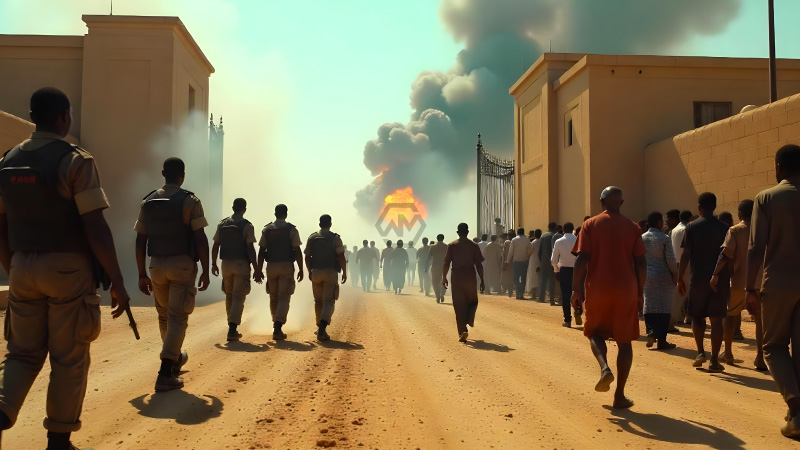- Armed gunmen stormed Chad’s presidential palace, resulting in 19 deaths.
- Government blames local youths; terrorism link ruled out.
- President Mahamat Deby Itno was unharmed; situation now under control.
A brazen assault on Chad’s presidential complex in N’Djamena has left 18 attackers and one security guard dead. According to government officials, the attackers—reportedly under the influence of drugs and alcohol—launched the attack late Wednesday.
Initially rumored to be a Boko Haram attack, authorities clarified that the perpetrators were disorganized local youths rather than coordinated militants.
N’Djamena in Turmoil: Attack on Chad’s Presidential Complex Ends in Bloodshed
Gunmen attempted to storm the presidential palace in Chad’s capital, triggering a fierce confrontation with security forces that left 19 dead and several injured. The government described the assailants as untrained and intoxicated, dismissing any connection to Boko Haram or other terrorist organizations.
Foreign Minister Abderaman Koulamallah, speaking from the palace after the attack, assured the public that the situation was under control. His comments highlighted the professionalism of the guards, who successfully thwarted the attackers despite the initial chaos.
The assault took place amid growing concerns over Chad’s political stability. President Mahamat Deby Itno, who succeeded his father in 2021 under controversial circumstances, has faced criticism over governance and his handling of internal security threats.
Chad, already grappling with violence in its western Lake Chad region due to Boko Haram insurgency, now faces questions about its ability to prevent similar assaults in the future. The incident reflects the fragility of a nation under military rule and struggling to maintain order.
The attack on Chad’s presidential palace highlights the nation’s ongoing struggles with internal instability and governance. Despite swift containment, the incident raises concerns about broader security challenges.
”Stability is not achieved through fear but through trust in leadership and institutions.”



